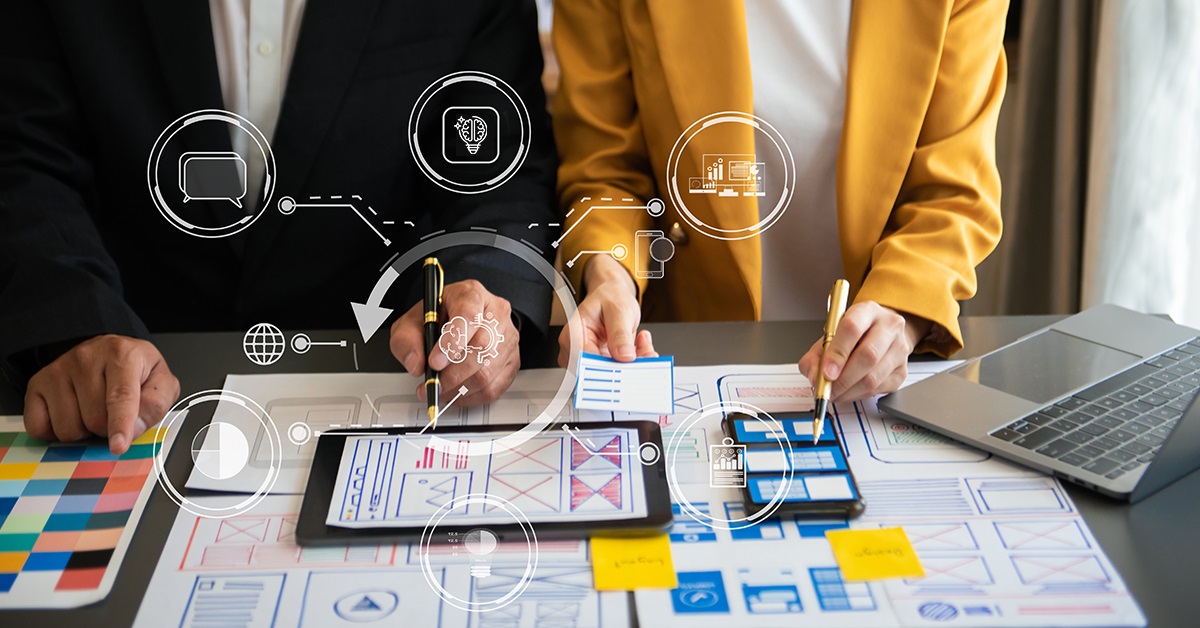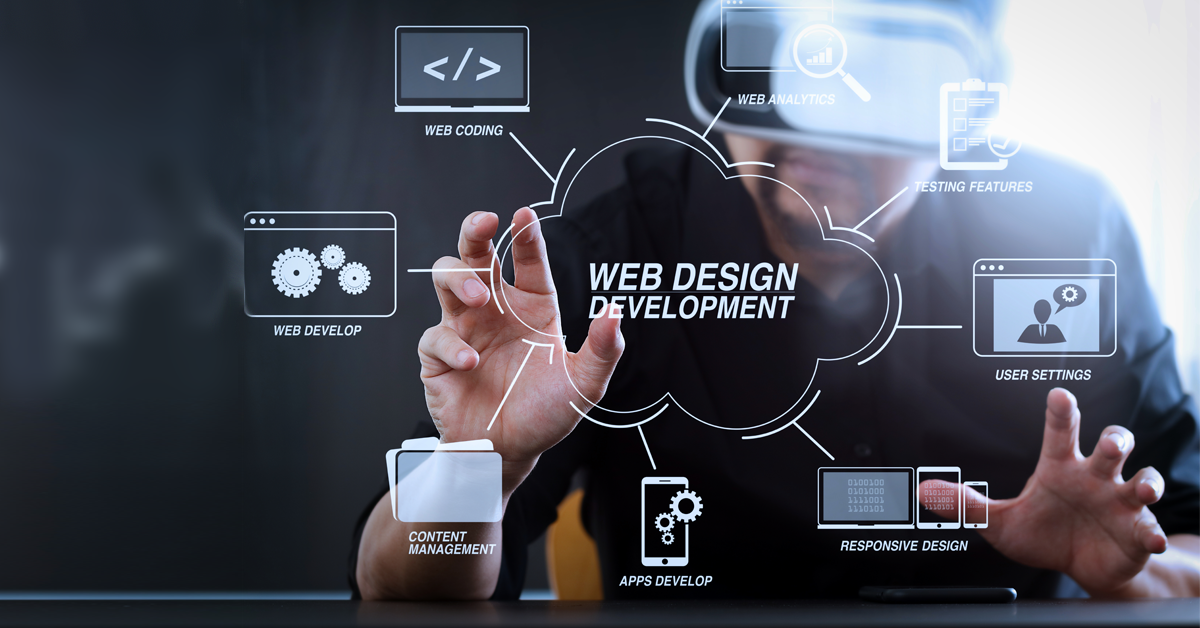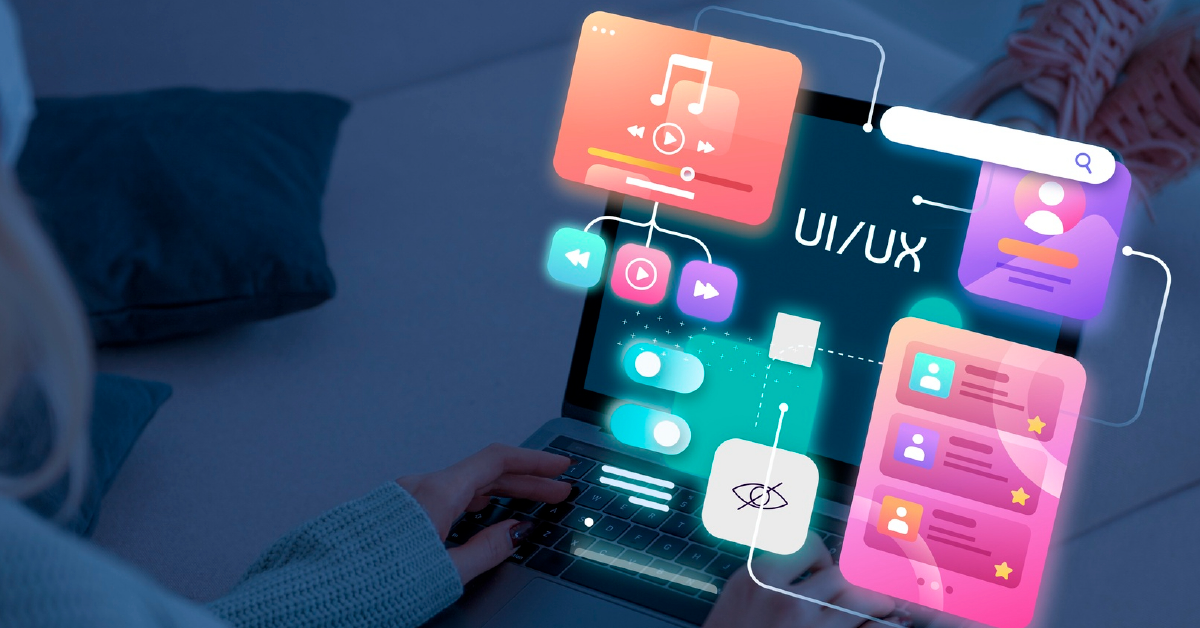Art of Web Design: Balancing Creativity and Functionality

6 min read
Web design is the fascinating result of combining creativity and practicality at the nexus of science and art. Finding the ideal balance between these components can be challenging, but doing so can result in aesthetically beautiful websites that offer the best possible user experience.
The complex planning, development, and ongoing maintenance of websites are all part of the multifaceted field of website design and development. It includes many aspects, such as the layout, colors, contrasts, fonts, graphics, user interface, and navigation ergonomics of a website. These components work together to create a website’s framework, enhancing its visual appeal and usability.
The significance of balancing creativity and functionality in web development cannot be overstated. While a visually appealing website is crucial, aesthetics alone cannot ensure user engagement. A website that seamlessly combines creative allure with functional efficiency has the potential to enhance usability, boost SEO rankings, and ultimately drive user retention and conversion. This delicate balance serves as a cornerstone in web design, emphasizing the need for visual appeal and practical functionality.
Understanding Creativity in Web Design
In its artistic and creative aspects, website design is fundamental. It goes beyond merely creating a functional website, demanding a profound understanding and application of aesthetics. Creativity in web design plays an essential role in crafting a unique user experience. Each element, ranging from color schemes and geometric shapes to typography and icons, becomes an opportunity to infuse artistic flair. This creative touch is instrumental in helping your website stand out amidst a sea of similar interfaces, a necessity in today’s competitive digital world.
Incorporating creativity into your web design can yield numerous benefits. It fosters user engagement by keeping visitors interacting with a visually pleasing website longer. Creative design also contributes to boosting your brand’s online presence, showcasing your brand’s artistic sensibility. Moreover, it can increase lead conversion as a unique website tends to be more memorable for potential clients. It’s essential to remember that creativity in web development involves achieving a delicate balance between visually impressing users and maintaining functional efficiency.
Enhancing Functionality in Web Design
Functionality is integral to any website design process. Without it, a website loses its purpose and becomes just an online canvas rather than an effective platform for conveying a message or promoting a product or service.
Importance of Functionality
A fully functional website does more than look appealing. It drives user engagement, fosters user trust, and helps a business achieve its goals. High functionality can mean reduced bounce rates, increased time spent on your site, and improved conversions.
Essential Elements of Functional Web Development
To create a functional website, focus on key elements such as:
- Navigation: A user-friendly navigation menu facilitates quick and easy access to pertinent information.
- Loading speed: Avoid losing users due to impatience by optimizing websites load time.
- Responsiveness: Ensure your website looks good and works well on all devices and platforms.
Tips for Maximizing Functionality in Web Design
- Use clear, straightforward CTAs (Call to Actions).
- Ensure that your design is neat and uncluttered.
- Regularly test your site for bugs and errors.
- Consider user feedback when making design enhancements.
- Make your website SEO-friendly to increase visitors.
The Balance between Creativity and Functionality
Creating stellar website design involves navigating a complex world of aesthetics and practicality. It leads us to explore an important factor in web design: the balance between creativity and functionality.
Exploring the Concept of Balance in WD
The art of web development is not all about flamboyant graphics or intricate animations. It’s also about providing a functional and efficient interface for users. Striking a balance between creativity and functionality means offering a visually appealing website that is easy to navigate and user-friendly.
Why Balance is Crucial for a Successful Website
Without balance, a website can lose its visual appeal or become difficult to use. A well-balanced site enhances user experience by making information easily accessible, simple to understand, and presented within an engaging environment.
Examples of Websites that Achieve the Perfect Balance
Emulating websites that have achieved this balance can be an excellent learning tool. Platforms like Apple, Airbnb, and Netflix exemplify how to brilliantly fuse creativity and functionality to provide a user experience that is both visually delightful and easy to navigate.
Tips for Striking a Balance
Understanding the art of website design lies in achieving the perfect harmony between creativity and functionality – a task that is often complex and multi-dimensional. Here are a few actionable tips to help find this equilibrium:
Analyzing the Target Audience and Their Needs
Instinctively, user interface (UI) design should begin by understanding their audience’s primary needs, preferences, and behaviors. These include elements such as:
- Age bracket
- Geographic location
- Online habits and interests
- Technological literacy levels
Incorporating these factors into their designs will ensure the website is tailored to its intended audience – enhancing its overall user experience.
Incorporating Usability Principles in Design
Web layout design goes beyond aesthetics; it encompasses usability principles such as navigation, readability, page load times, and being optimized for mobile compatibility. These principles are essential in ensuring your website is user-friendly and impactful.
Striking the Correct Balance between Usability and Aesthetics
Lastly, balancing aesthetics and functionality can be tricky. While a visually appealing website can attract users, ensuring its functionality isn’t compromised is crucial. Ease of navigation, consistent color schemes, concise text placement, and the strategic use of white space all contribute to a well-balanced website.
Read more: How Web Development Companies Can Help Boost Productivity
Enhancing User Experience through Creativity and Functionality

Importance of User Experience in Web Design
Web layout design isn’t merely an art—it’s a multiplex of various aspects focused on delivering an optimal user experience. User experience, or UX, is a user’s emotional response when interacting with a website. A good UX can mean the difference between a satisfied customer and a disgruntled visitor. A designed web solution must be both visually compelling and user-friendly.
Using Creativity and Functionality to Optimize User Experience
Striking a balance between creativity and functionality can significantly enhance a website’s user experience. Creatively designed elements grab the users’ attention at first glance, while user-friendly functionality ensures a smooth and effective interaction. Noteworthy factors to consider are:
- Interactive design
- Fast loading speed
- Mobile responsive design
- Easy navigation
Case Studies of Websites that Prioritize User Experience
Let’s consider the Apple and Airbnb websites. Both prioritize UX, combining functional design with elegant, refined aesthetics. On Apple’s website, minimalistic design meets a high level of functionality. A beautiful, clean layout on Airbnb’s portal enhances user interaction with numerous functionalities. Both are perfect examples of achieving balance in user interface (UI) design, bridging the gap between creativity and user functionality.
Methods and Resources for Reaching the Ideal Balance
To strike the ideal balance between creativity and functionality in web layout design, several tools and techniques come in handy.
Using Wireframes and Prototypes for Design Planning
First and foremost, wireframes and prototypes play a fundamental role in design planning. Wireframes provide a schematic, simplified visual guide of the website layout, enabling you to arrange and structure elements effectively. On the other hand, prototyping presents a preliminary model of your website where you can test various design solutions and interactivity.
Incorporating User Feedback to Improve Creativity and Functionality
User feedback is another essential tool. Receiving comments from users about a website’s usability and aesthetics helps designers identify areas of improvement and generate creative solutions to address those issues.
Utilizing Responsive Design for Optimal User Experience on Different Devices
Lastly, responsive design is essential in creating an optimal user experience. It ensures your website’s functionality and design adapt seamlessly to different devices, maintaining consistent user experience across platforms. Whether on a smartphone, tablet, or desktop, your webpage should look and function impeccably through responsive design.
Conclusion
It is important to maintain a balance between creativity and functionality when it comes to web design. A website must strike this careful balance in order to stand out from the competition and offer a first-rate customer experience. The elegant combination ensures that a website never strays from its primary objective, which is to provide straightforward access to easily understood content, even with an eye-catching appearance.
Designers are encouraged to explore the bounds of creativity, embracing inventiveness, originality, and nonconformist thinking. However, it’s imperative to bear in mind that usability should never be sacrificed merely for the sake of aesthetic appeal. Content accessibility and user-friendly navigation should be prioritized to facilitate users in swiftly and efficiently achieving their intended goals.
In conclusion, while striking the ideal balance in web development may not be easy, it is a goal that can be attained. It entails locating the optimal spot where user experience is enhanced by creativity rather than detracted from it. Through consistent practice, designers can become experts at the skill of creatively fusing functionality with design, increasing the impact and effectiveness of websites.
Reach out to us to get more inforamtion about our software development services!
Published: January 9th, 2024





